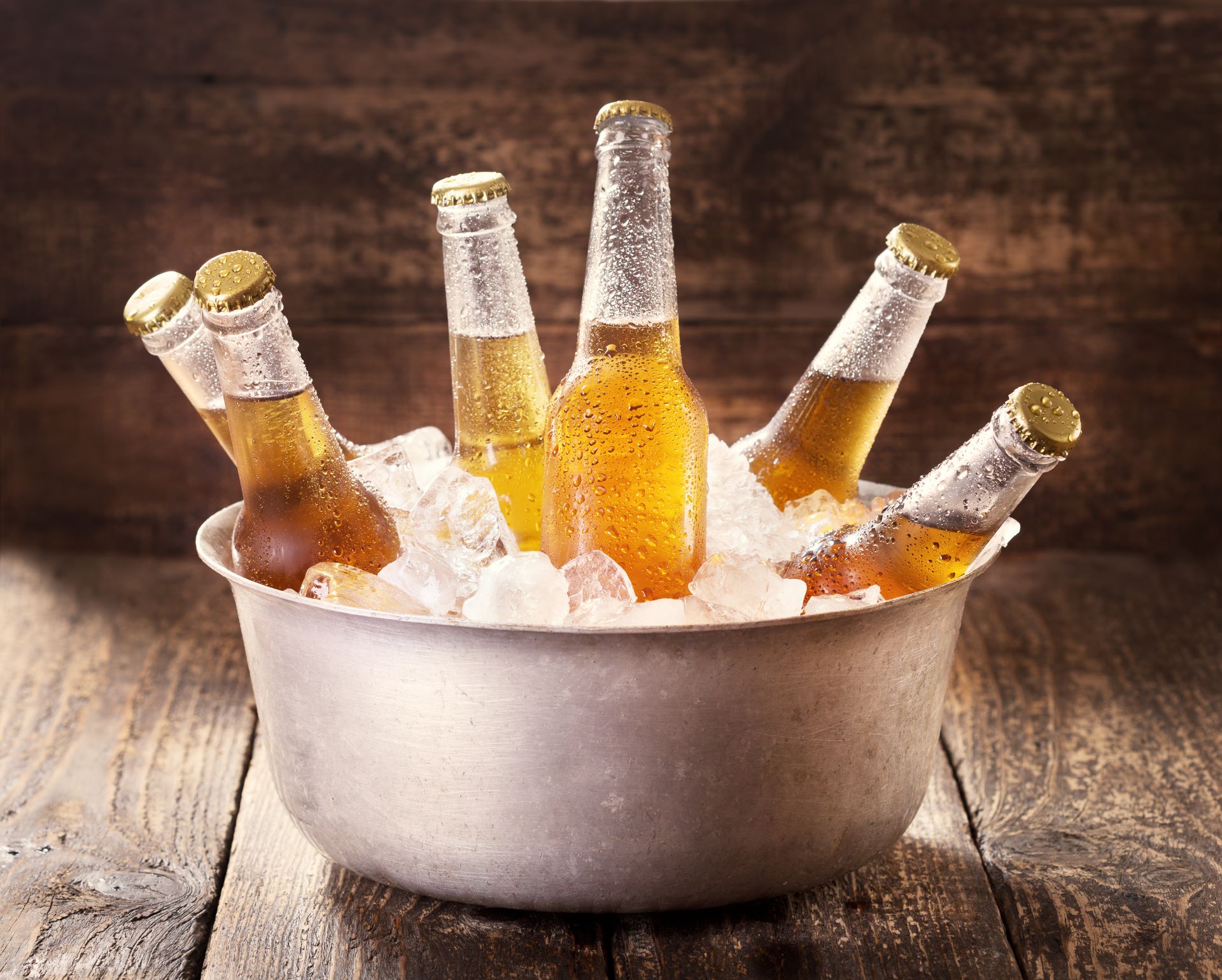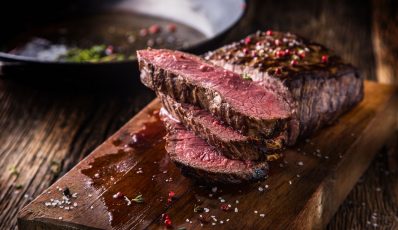Freezing beer is a fascinating, but somewhat lesser-known, technique used by breweries to enrich the flavor and increase the alcohol content of beer. The process uses the freezing point of beer to separate water from alcohol. In this article, we will look at this method's practical applications and explain how freezing affects the beer's characteristics.

Freezing beer is a fascinating, but somewhat lesser-known, technique used by breweries to enrich the flavor and increase the alcohol content of beer. The process uses the freezing point of beer to separate water from alcohol. In this article, we will look at this method’s practical applications and explain how freezing affects the beer’s characteristics.
The history of beer freezing
The technique of freezing beer has its roots in the past. The origins of this process date back to medieval Europe, where low temperatures were used by brewers to naturally thicken beers. This method, known as “eisbock”, was initially used in Germany. Brewers noticed that during winter frosts, some of the contents of beer barrels froze, leaving a higher concentration of alcohol and flavor in the liquid.
In a time when refrigeration was limited to natural environmental conditions, freezing beer was both an art and a science, requiring precision and experience. Over the centuries, as refrigeration technologies developed, the freezing process became more controlled, repeatable, and popularized.
In the 20th century, thanks to advances in refrigeration technology, freezing beer evolved into a more advanced technique used not only to increase alcohol content but also to experiment with richer and more complex flavor profiles. Breweries began experimenting with different styles of beer to check which were best suited for the process and how different temperatures affected the final product.
Freezing beer has become popular not only in Germany but also around the world, attracting the attention of beer lovers looking for new, intense taste experiences. Today, it is a valued technique used by both commercial and home breweries.
Beer freezing point
The freezing point of beer is a key element of the freezing process and depends on several factors, mainly the alcohol and extract content in the beer. Alcohol lowers the freezing point of liquids, which means that the higher the alcohol content in beer, the lower the temperature is needed for it to freeze.
The freezing point of most beers is between -2 and -8 degrees Celsius. For stronger beers, such as those used in the freezing process, the freezing point may be even lower. Brewers must carefully monitor and regulate the temperature during the freezing process to effectively separate the water from the remaining ingredients of the beer, preventing excessive freezing, which could destroy the delicate flavors and aromas of the beer.
The process of beer freezing
Freezing beer is a technique that involves selectively freezing part of the water contained in beer and then removing ice crystals, which leads to an increase in alcohol concentration and intensification of taste and aroma in the remaining liquid. This process is relatively simple but requires precise control of conditions and temperature. Here’s what freezing beer looks like step by step:
Step 1: Preparing the beer
It is important that the beer is well fermented and clear before starting the freezing process, as unfermented sugars can affect the efficiency of the process.
Step 2: Cooling
The beer is cooled to a temperature that is close to, but slightly above, its freezing point (usually between -1 and -6 degrees Celsius). The freezing point of beer depends on its alcohol and extract content. At this stage, the water begins to crystallize as ice, while the alcohol and other ingredients remain liquid.
Step 3: Removing the ice
The ice that forms during freezing is gradually removed from the beer. This can be done through natural straining, where the ice remains on the surface and is manually removed, or with the use of specialized filters. Removing the ice causes the concentration of alcohol and flavors in the remaining liquid to be higher.
Step 4: Maturation
After removing the appropriate amount of ice, the concentrated beer can be subjected to an additional maturation process. This stage allows you to further develop the depth and complexity of flavor, which is especially important in the case of strong and rich beers.
Step 5: Bottling
The final stage is bottling the beer. The beer is often bottled with less or no carbonation so as not to disturb the intense and rich flavor profile that has been achieved through the freezing process.
Thanks to freezing, brewers can create beers with exceptional alcohol density and flavor intensity, which makes this method particularly appreciated in the production of experimental and specialist beers.
-
Fermentation Vessel – 30 L – integrated cooling coil
-
Conical Fermenter – 70 L – 0 – 40 °C – stainless steel – with insulating cover 299.00 €
-
Brew Kettle – 30 L – 2,500 W – 25 – 100 °C – Stainless steel – Display – Timer
-
Mash Tun – with insulation – 60 L – 3000 W – 10 – 100 °C – stainless steel – LCD display – timer
Types of frozen beer
Although the freezing technique can be used in a variety of beer types, there are certain styles that particularly benefit from this method. Here are some popular types of frozen beer that have gained recognition around the world:
Eisbock
This traditional German style of beer is a creation made by accidentally freezing bock (a traditional German strong lager). As a result of this process, eisbock is characterized by a very intense, rich flavor with distinct notes of caramel, chocolate, and even dried fruit. The alcohol in this beer can reach levels of up to 14% ABV, making it one of the strongest beers available on the market.
Ice IPA
Ice IPA is a relatively new experiment in the world of beer freezing, where traditional India Pale Ale is subjected to a freezing process to concentrate both the alcohol and aromatic hop oils. The result is a beer with a more intense hop aroma and greater bitterness, which makes it an interesting variety for lovers of strong, aromatic beers.
Barleywine
Barleywine is another style that is great for freezing. Its naturally high sugar and alcohol content make it an ideal candidate for concentrating flavors through freezing. The frozen barleywine offers even deeper notes of dried fruit, caramel and toffee, making it an exceptionally rich and full-bodied beer.
Imperial Stout
Imperial Stouts, known for their deep black and strong, roasty character, are also an excellent choice for the frosting process. Freezing can further enhance their naturally strong chocolate, coffee, and dark fruit notes while increasing the alcohol content and providing an even richer tasting experience.
Experimental species
Brewers are also experimenting with other styles of beer, such as saisons and witbiers, using freezing as a way to explore new flavor and textural possibilities. Although these beers are not so typical of the freezing process, their innovative versions may surprise even experienced tasters.
Each style of frozen beer offers unique flavor profiles that are the result not only of the original recipes, but also of the specific conditions created by the freezing process. Thanks to this, these beers are becoming increasingly popular among those seeking new beer experiences.
Advantages of freezing beer
Freezing beer brings a number of advantages that are particularly appreciated by breweries and beer connoisseurs. One of the main advantages is a significant increase in the flavor and aromatic intensity of beer. This process concentrates key ingredients such as sugars and essential oils from hops, leading to a richer and fuller flavor profile.
Additionally, freezing beer allows you to achieve a higher alcohol content, which is desirable in some beer styles, such as Eisbock or imperial stouts, offering a more intense experience and better flavor structure.
Another important advantage is the possibility of innovation and diversification of the offer. Breweries using this technique can experiment with new flavors and styles, attracting beer lovers in search of unique experiences. Finally, frozen beers often enjoy a special status among their enthusiasts, which can contribute to increasing brand recognition and building customer loyalty to the brewery.
Freezing beer at home
Here are some key tips to help home brewing enthusiasts achieve success with this advanced technique:
Choosing the right beer
Start with a beer that is high in sugar and alcohol, such as barleywine, imperial stout, or strong lager. These styles are best suited to the freezing process because their natural density and alcohol content promote the creation of more intense flavors.
Precise cooling
Temperature control is key. Use a freezer or a specialized cooling device that will allow you to carefully monitor and regulate the temperature. Remember that the ideal temperature for freezing beer is usually between -1 and -6 degrees Celsius, depending on the initial alcohol content of the beer.
Monitoring and patience
Freezing beer is a process that requires time and patience. Check the beer regularly to see if ice is starting to form. Don’t rush to remove it; allow the beer to concentrate properly.
Filtration and clarification
After removing the ice, the beer may appear cloudy. Use beer filters to remove remaining suspensions and sediments. Proper filtering will improve the clarity and overall quality of the beer.
Ripening
After the freezing process, allow the beer to mature. Freezing can change the flavor balance, so additional aging time will help the flavors integrate and develop fullness.
Experiment!
Experimentation is the key to mastering the technique of freezing beer, but always proceed with caution. Start with smaller batches to minimize risk and gain practical knowledge of each process.
Remember that freezing beer is an advanced technique and may require several attempts before you achieve the desired results. Every batch of beer is different, so be prepared to adjust the process based on the results of each experiment.






Share